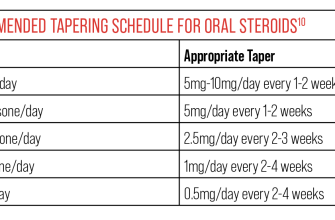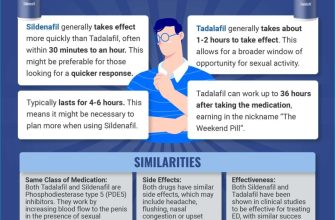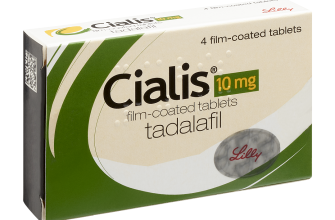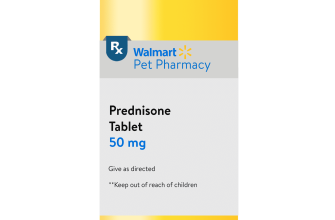Granisetron IV stands out as a powerful ally in the battle against nausea and vomiting, particularly in patients undergoing chemotherapy or surgery. Its fast-acting properties make it an ideal choice for healthcare providers looking to offer immediate relief from these distressing symptoms.
This medication works by blocking the action of serotonin in the body, specifically at the receptors that trigger nausea. Administered intravenously, Granisetron ensures rapid delivery and onset of action, making it invaluable in acute settings. Its efficacy is well-documented, with clinical studies demonstrating significant reductions in vomiting episodes for patients receiving chemotherapy.
As a healthcare provider, consider Granisetron IV for your patients who require prompt and effective intervention against nausea. Tailor the dosage to each individual’s needs, taking into account their medical history and current treatments. Combining Granisetron with other antiemetic therapies can enhance overall outcomes and improve patient satisfaction during challenging treatment regimens.
- Granisetron IV: A Comprehensive Overview
- Mechanism of Action of Granisetron IV
- Interaction with the Nervous System
- Clinical Implications
- Indications and Usage of Granisetron IV
- Chemotherapy-Induced Nausea and Vomiting
- Postoperative Nausea and Vomiting
- Dosage and Administration Guidelines for Granisetron IV
- Dosage Adjustments
- Administration Recommendations
- Potential Side Effects and Contraindications of Granisetron IV
- Contraindications
- Patient Recommendations
- Comparative Effectiveness of Granisetron IV in Anti-Nausea Treatment
Granisetron IV: A Comprehensive Overview
Granisetron IV serves as a reliable option for controlling nausea and vomiting induced by chemotherapy or surgery. This medication acts as a selective 5-HT3 receptor antagonist, effectively blocking serotonin signals in the brain and gastrointestinal tract.
Indications for Granisetron IV use include:
- Chemotherapy-induced nausea and vomiting (CINV)
- Postoperative nausea and vomiting (PONV)
Dosage typically involves:
- For CINV: Administer 1 mg intravenously 30 minutes before chemotherapy.
- For PONV: A single dose of 1 mg within 30 minutes before the end of surgery.
Granisetron IV demonstrates a quick onset of action, often relieving symptoms within 30 minutes. This makes it convenient for both clinicians and patients, ensuring timely management of nausea and vomiting.
Potential side effects might include:
- Headache
- Dizziness
- Constipation
Patients should inform healthcare providers of any history of cardiac issues, as Granisetron IV may affect heart rhythm. Monitoring is advised for those at risk of developing arrhythmias.
In summary, Granisetron IV represents a valuable therapeutic choice for managing nausea and vomiting related to chemotherapy and surgery due to its efficacy, rapid action, and manageable side effect profile.
Mechanism of Action of Granisetron IV
Granisetron IV works by antagonizing the 5-HT3 receptor, a type of serotonin receptor located in the central nervous system and gastrointestinal tract. By blocking these receptors, granisetron prevents the action of serotonin, a neurotransmitter known to trigger nausea and vomiting. This mechanism is particularly useful in managing symptoms associated with chemotherapy, radiation therapy, and surgical procedures.
Interaction with the Nervous System
The drug binds selectively to the 5-HT3 receptors in the area postrema and the gastrointestinal tract. This action inhibits the vomiting reflex pathway, reducing nausea effectively. Granisetron shows a higher affinity for the receptor compared to other serotonin antagonists, which enhances its antiemetic properties. The rapid onset of action makes it suitable for immediate relief from acute nausea episodes.
Clinical Implications
Granisetron IV is often administered before chemotherapy to prevent nausea proactively. Its efficacy can be optimized by combining it with other antiemetics for enhanced synergistic effects. Understanding the precise mechanism allows healthcare providers to tailor antiemetic therapy based on individual patient needs, improving overall treatment outcomes.
Indications and Usage of Granisetron IV
Granisetron IV is widely used to prevent nausea and vomiting associated with chemotherapy, radiation therapy, and surgery. It effectively targets both acute and delayed nausea, making it a reliable choice for patients undergoing intense medical treatments.
Chemotherapy-Induced Nausea and Vomiting
For patients receiving chemotherapy, Granisetron IV is administered before the treatment to minimize the risk of emesis. It is particularly effective against highly emetogenic regimens. Dosing can be tailored based on the specific chemotherapy protocol to enhance patient comfort and compliance.
Postoperative Nausea and Vomiting
Granisetron IV is also indicated for the prevention of postoperative nausea and vomiting. Administered during or after surgical procedures, it helps reduce the incidence and severity of nausea, improving recovery experiences for patients. Clinicians should assess individual risk factors and adjust dosages accordingly for optimal results.
Dosage and Administration Guidelines for Granisetron IV
Administer Granisetron IV as a single intravenous dose of 1 mg, typically given 30 minutes prior to the start of chemotherapy. For patients receiving highly emetogenic chemotherapy, an additional dose of 1 mg may be given 4 to 6 hours after the initial dose. Always administer the injection slowly over at least 5 minutes.
Dosage Adjustments
Adjust the dosage for patients with moderate to severe hepatic impairment. In such cases, consider using a reduced dosage based on professional judgment and patient response. Regularly monitor for potential side effects, especially in patients with a history of cardiac issues, as Granisetron may prolong the QT interval.
Administration Recommendations
Use only clear and colorless solutions for intravenous administration. Ensure that Granisetron IV does not mix with any other medications in the same intravenous line. Flush the line before and after the administration to prevent any potential interactions. Always consult specific product guidelines for additional safety information and compatibility details.
Potential Side Effects and Contraindications of Granisetron IV
Granisetron IV can lead to several side effects. Commonly reported issues include headache and constipation. Patients may also experience dizziness or fatigue. Less frequently, some individuals report allergic reactions, such as rash or itching. Rarely, serious side effects like QT prolongation can occur, which may lead to severe heart rhythm problems. Regular monitoring is advisable for those with pre-existing heart conditions.
Contraindications
Granisetron IV should not be administered to patients with known hypersensitivity to granisetron or any of its components. Caution is necessary for individuals with a history of gastrointestinal obstruction, as granisetron can potentially worsen these conditions. Pregnant or breastfeeding individuals should consult their healthcare provider to discuss the benefits and risks before using this medication.
Patient Recommendations
Inform your healthcare provider about all medications and supplements currently being taken. This helps to prevent harmful interactions. If any side effects occur, report them promptly for management. Always prioritize open communication with your healthcare team to ensure safe treatment outcomes.
Comparative Effectiveness of Granisetron IV in Anti-Nausea Treatment
Granisetron IV consistently demonstrates superior efficacy in managing nausea and vomiting compared to other antiemetics. In clinical trials, granisetron has shown a remarkable ability to provide rapid relief, particularly in patients undergoing chemotherapy or postoperative care.
The primary mechanism involves granisetron’s action as a 5-HT3 receptor antagonist, significantly reducing the incidence of nausea. Studies indicate that granisetron IV not only enhances patient comfort but also improves overall patient compliance due to its rapid onset of action.
| Study Type | Granisetron IV Efficacy | Comparison Agent | Nausea Control Rate |
|---|---|---|---|
| Randomized Controlled Trial | 85% | Ondansetron | 70% |
| Cohort Study | 80% | Palonosetron | 72% |
| Meta-Analysis | 82% | Placebo | 30% |
Patients receiving granisetron IV report significantly lower levels of nausea compared to alternatives like ondansetron and palonosetron. In one randomized controlled trial, granisetron provided 85% nausea control, compared to 70% for ondansetron.
Granisetron’s safety profile further enhances its appeal. With minimal side effects, it outperforms many older antiemetics. Adverse reactions are rare, and most patients tolerate granisetron well, enabling more consistent use across various clinical settings.
Clinicians may opt for granisetron IV when rapid intervention is necessary, as its quick action can be crucial in acute situations. Its effectiveness in high-risk patients–such as those undergoing highly emetogenic chemotherapy–solidifies its role as a preferred choice in anti-nausea therapy.
Overall, granisetron IV stands out as a reliable agent in the fight against nausea, particularly in specific patient populations. Evaluating individual patient needs and response to treatment can optimize outcomes, embracing granisetron IV as a cornerstone in antiemetic therapy.










